- Preparing the Soil
- Choosing the Right Location
- Light
- Temperature
- Soil
- Wind
- Proximity to Water
- Planting the Seedlings
- Providing Adequate Watering
- Applying Fertilizer
- Protecting from Pests and Diseases
- Pruning and Training Techniques
- 1. Deadheading
- 2. Pinching
- 3. Disbudding
- 4. Staking
- 5. Training
- 6. Pruning for Overwintering
- Harvesting and Maintenance
- Harvesting:
- Maintenance:
- Additional Tips:
- Questions and Answers:
- What is Eustoma?
- Where can I buy Eustoma seedlings?
- When should I plant Eustoma seedlings?
- How do I care for Eustoma seedlings?
- Can I grow Eustoma in pots?
- How long does it take for Eustoma seedlings to bloom?
- Can I save the seeds from my Eustoma plants?
- Videos: ये फ़ूल देते है गुलाब को टक्कर || Lisianthus Plant From Seeds || Summer/Winter Flowering Plants
Eustoma, also known as Lisianthus, is a stunningly beautiful flower that is prized by gardeners and florists alike. With its delicate petals and vibrant colors, it is no wonder that Eustoma is a popular choice to grow in home gardens and to use in floral arrangements. While Eustoma can be grown from seeds, many gardeners opt to start with seedlings to ensure a higher success rate and quicker blooms.
Starting Eustoma from seedlings requires careful attention to detail and the right growing conditions. It is important to select healthy seedlings with strong roots to give them the best chance of survival. Additionally, Eustoma prefers well-draining soil and a sunny location, so be sure to choose a suitable spot in your garden or prepare a container with the proper conditions.
Once you have your seedlings ready, it is important to handle them with care during transplanting. Gently loosen the roots and plant them at the same depth they were in the seed tray. Avoid overwatering to prevent root rot, and keep an eye out for any signs of stress or pest infestation.
With proper care and attention, your Eustoma seedlings will thrive and reward you with beautiful blooms. Remember to regularly water them, fertilize as needed, and provide support for the stems if they become top-heavy. Enjoy the process of watching your Eustoma seedlings grow into stunning flowers that will brighten up your garden or make a perfect addition to any floral arrangement.
Preparing the Soil
Before planting your eustoma seedlings, it’s important to prepare the soil properly. By providing the right conditions, you can ensure healthy growth and beautiful flowers. Here are some steps to prepare the soil for your eustoma plants:
- Choose the right location: Eustomas prefer well-draining soil and full sun exposure. Select a spot in your garden that receives at least 6 hours of direct sunlight per day.
- Clear the area: Remove any weeds, grass, or debris from the planting area. This will help prevent competition for nutrients and reduce the risk of disease.
- Loosen the soil: Use a garden fork or tiller to break up the soil to a depth of at least 12 inches. This will improve drainage and allow the roots to penetrate easily.
- Test the soil: It’s a good idea to test the pH level and fertility of the soil before planting. Eustomas prefer a slightly acidic soil with a pH of 6.0 to 6.5. You can adjust the pH level by adding sulfur or lime if necessary.
- Add organic matter: Incorporate well-rotted compost or aged manure into the soil. This will improve its structure, fertility, and moisture-retaining capacity. Spread a layer of organic matter on top of the soil and mix it in thoroughly.
- Level the soil: Use a rake to level the soil surface and remove any clumps or rocks. This will create a smooth planting bed for your eustoma seedlings.
Once the soil is prepared, you can proceed with planting the eustoma seedlings. Follow the recommended planting distance and depth, and water the plants gently after planting to settle the soil around the roots. With proper soil preparation, your eustomas will have a solid foundation for healthy growth and abundant flowering.
Choosing the Right Location
Choosing the right location for your eustoma seedlings is crucial for their growth and development. Here are some factors to consider when selecting a location:
Light
Eustoma seedlings require full sunlight to thrive. Choose a location that receives at least 6 to 8 hours of direct sunlight daily. Avoid areas that are shaded by buildings, trees, or other tall structures.
Temperature
Eustoma seedlings prefer moderate temperatures between 70°F and 75°F (21°C and 24°C). Avoid extreme temperature fluctuations, as they can stress the plants and affect their growth. If you live in a region with hot summers, provide some shade during the hottest part of the day.
Soil
Eustoma seedlings prefer well-draining soil that is rich in organic matter. The soil should have a pH level between 6.0 and 7.0. If your soil is heavy and clayey, consider amending it with compost or sand to improve drainage.
Wind
Eustoma seedlings are delicate and can be easily damaged by strong winds. Choose a location that is sheltered from strong gusts of wind. If necessary, you can create a windbreak using a fence, hedge, or other structures.
Proximity to Water
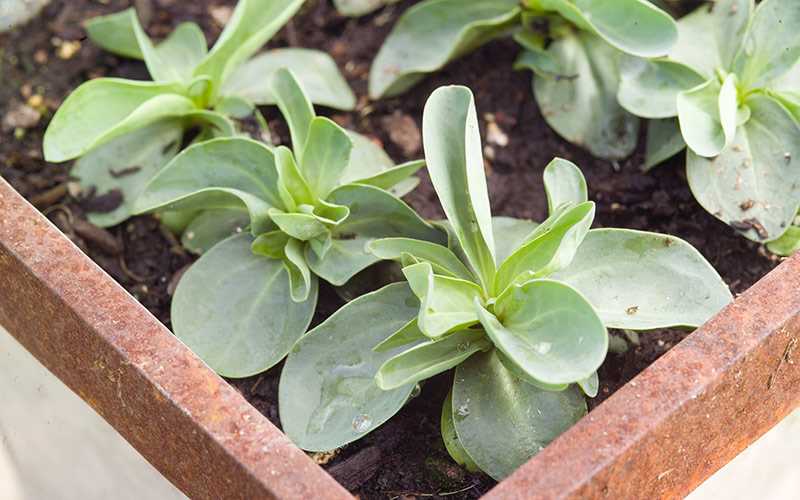
Eustoma seedlings require regular watering to stay hydrated. Choose a location that is close to a water source, such as a hose or sprinkler system. This will make it easier to water your seedlings and ensure they receive an adequate amount of water.
By considering these factors and selecting the right location for your eustoma seedlings, you can provide them with the ideal growing conditions for strong and healthy growth.
Planting the Seedlings
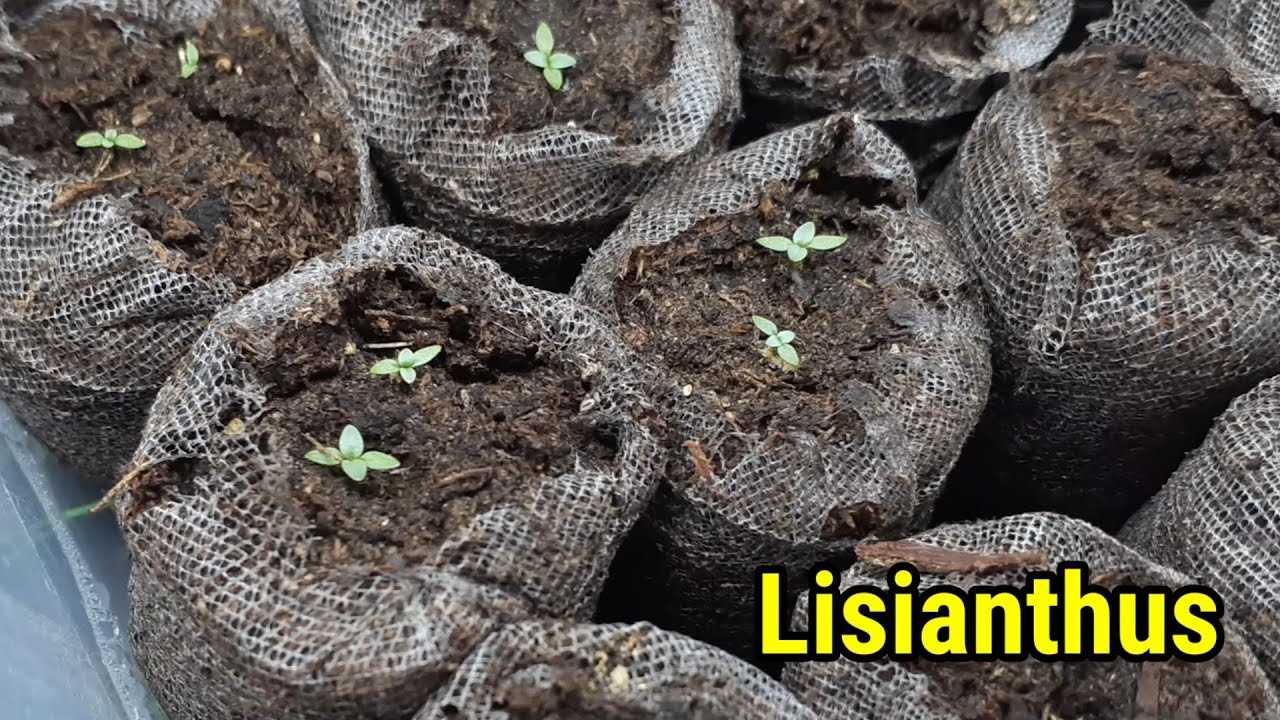
Once your eustoma seedlings have grown to a size of about 4-6 inches, it’s time to transplant them into your garden or containers. Follow these steps to ensure a successful planting process:
- Choose a location that receives full sunlight for at least 6-8 hours a day. Eustoma plants thrive in bright, direct light.
- Prepare the soil by removing any weeds or debris and loosening it with a garden fork or tiller. Eustoma prefers well-draining soil, so amend it with compost or sand if necessary.
- Dig holes that are twice the size of the rootball of each seedling. Space the holes about 12-18 inches apart to allow the plants enough room to grow.
- Gently remove the seedlings from their pots, being careful not to damage the delicate roots. If the roots are congested, loosen them with your fingers or a small tool.
- Place each seedling into a hole, making sure that the crown (where the stem meets the roots) is level with the soil surface. Avoid burying the crown too deep, as this can lead to rot.
- Backfill the holes with soil, pressing it gently around the roots to remove any air pockets. Water the seedlings thoroughly after planting to help them establish.
- Apply a layer of organic mulch, such as wood chips or straw, around the base of the plants. This will help conserve moisture, suppress weeds, and regulate soil temperature.
Remember to water your eustoma regularly, especially during dry periods, and monitor for any signs of pests or diseases. With proper care, your eustoma seedlings will soon blossom into beautiful flowers, bringing color and charm to your garden.
Providing Adequate Watering
Watering is an essential aspect of growing eustoma seedlings. Adequate moisture is necessary for the plants to develop a strong root system and thrive. Here are some tips for providing the right amount of water:
- Consistent watering: Maintain a regular watering schedule to ensure the soil remains evenly moist. Allow the soil to dry slightly between waterings, but avoid letting it become completely dry.
- Deep watering: When watering, make sure to thoroughly saturate the soil, allowing the water to reach the roots. Shallow watering can lead to shallow root growth.
- Avoid overwatering: While it’s important to water consistently, overwatering can be detrimental to eustoma seedlings. Excess water can lead to root rot and other diseases. Check the moisture level by inserting your finger into the soil – if it feels damp, wait to water.
- Watering technique: Instead of using a strong stream of water, use a gentle watering technique, such as a watering can or a hose with a soft spray nozzle. This will help prevent soil erosion and ensure that the water is evenly distributed.
It’s important to note that the water requirements of eustoma seedlings can vary depending on factors such as temperature and humidity. Monitor the moisture level of the soil regularly and adjust your watering routine accordingly. By providing adequate watering, your eustoma seedlings will have the best chance of growing into healthy and beautiful plants.
Applying Fertilizer
Proper fertilization is essential for the healthy growth of eustoma seedlings. Here are some tips for applying fertilizer:
- Choose the right fertilizer: Select a balanced fertilizer with equal amounts of nitrogen, phosphorus, and potassium (NPK). Eustoma seedlings benefit from a fertilizer with an NPK ratio of 10-10-10 or 20-20-20.
- Apply the fertilizer before planting: Mix the fertilizer into the soil before planting the eustoma seedlings. Follow the instructions on the fertilizer package for the appropriate amount to use based on the size of your planting area.
- Apply liquid fertilizer during growth: Once the eustoma seedlings are established, you can supplement their nutrition with liquid fertilizer. Dilute the fertilizer according to the package instructions and apply it to the soil around the base of the seedlings.
- Fertilize regularly: Eustoma seedlings benefit from regular fertilization throughout the growing season. Follow the fertilizer package instructions for the frequency and amount to use.
- Avoid over-fertilization: While it’s important to provide adequate nutrition, over-fertilization can harm eustoma seedlings. Follow the recommended dosage and avoid applying excessive amounts of fertilizer.
- Monitor plant growth: Keep an eye on the eustoma seedlings’ growth and overall health. If you notice any signs of nutrient deficiencies or excesses, adjust the fertilizer application accordingly.
By properly applying fertilizer, you can ensure that your eustoma seedlings receive the nutrients they need to thrive and produce beautiful blooms.
Protecting from Pests and Diseases
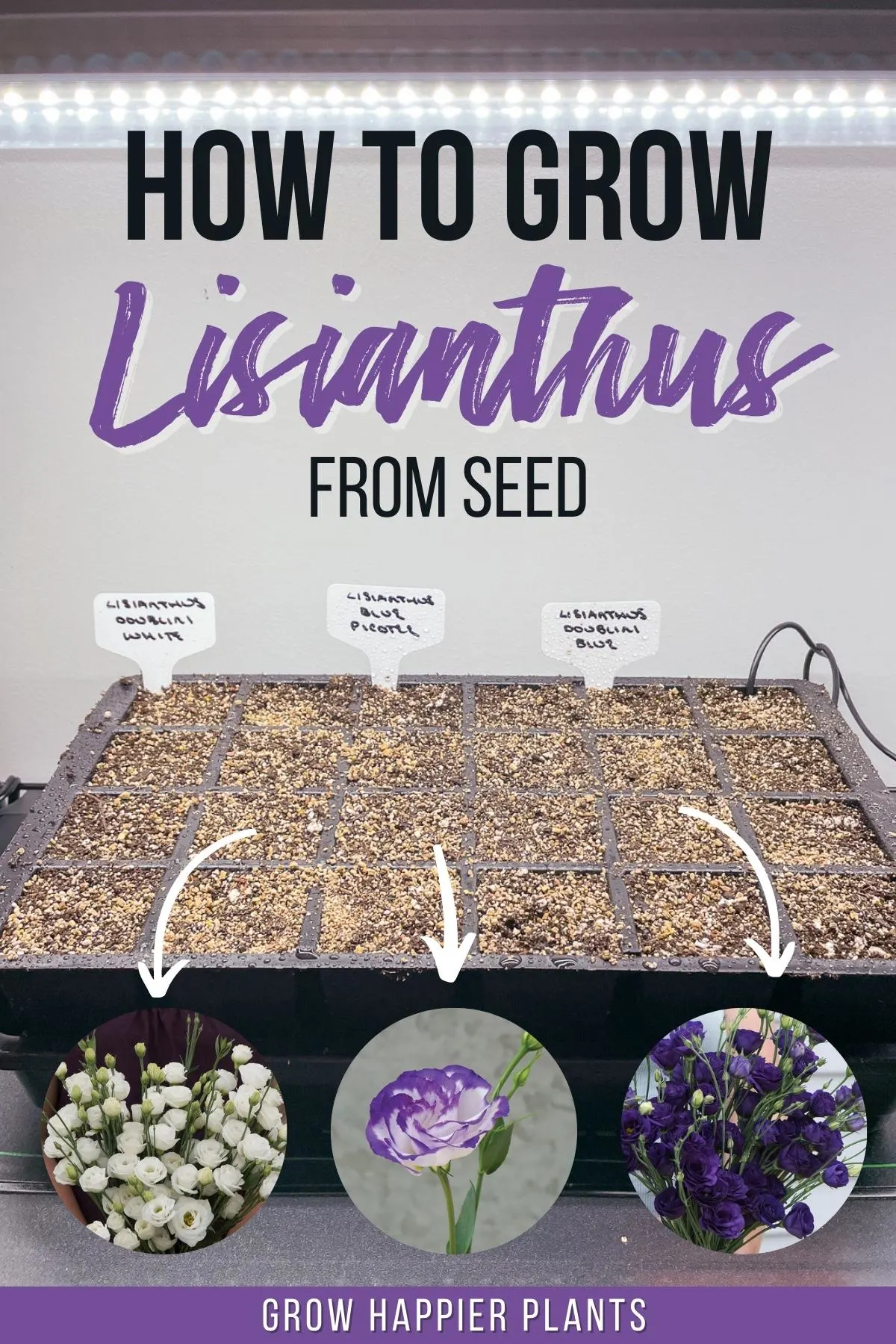
Eustoma plants are relatively hardy and resistant to pests and diseases, but they can still be susceptible to certain issues. Here are some strategies to protect your eustoma seedlings from common pests and diseases:
- Monitor regularly: Regularly check your eustoma plants for signs of pests or diseases. Look for chewed leaves, wilting, discoloration, or any other unusual symptoms.
- Keep the area clean: Clean up any fallen leaves or debris around your eustoma plants, as they can attract pests and harbor diseases. Regularly weed the area to prevent competition and reduce the chances of pests finding a home.
- Water properly: Be mindful of your watering practices to avoid waterlogged soil, which can lead to root rot and other fungal diseases. Water at the base of the plant and try to keep the foliage dry.
- Introduce beneficial insects: Some insects can actually help control pests in your garden. Consider introducing beneficial insects, such as ladybugs or lacewings, which are natural predators of aphids and other common pests.
- Use organic pest control methods: If pests become a problem, consider using organic pest control methods, such as neem oil or insecticidal soap. These options are less harmful to beneficial insects and can effectively control pests.
- Rotate crops: If you are growing eustoma in a larger garden or agricultural setting, practice crop rotation. This helps prevent the build-up of pests and diseases in the soil and reduces the risk of re-infection.
- Quarantine infected plants: If you notice any signs of pests or diseases on your eustoma seedlings, immediately isolate the infected plants to prevent the spread. Treat them separately and monitor closely.
- Follow good cultivation practices: Healthy plants are generally more resistant to pests and diseases. Provide your eustoma seedlings with optimal growing conditions, including proper sunlight, good air circulation, and adequate nutrition.
By following these tips and closely monitoring your eustoma plants, you can minimize the risk of pests and diseases and ensure healthy growth and beautiful blooms.
Pruning and Training Techniques
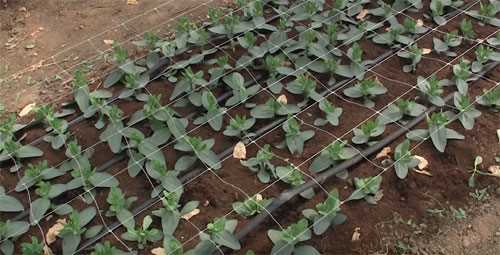
Pruning and training eustoma plants is essential for encouraging optimal growth and promoting healthy flower production. Here are some techniques to consider:
1. Deadheading
Regular deadheading, which involves removing spent flowers, is crucial for eustoma plants. This encourages the plant to produce new buds and prolongs the flowering period. Simply trim off the faded flowers with a clean pair of shears or scissors.
2. Pinching
Pinching is a technique used to promote bushier growth in eustoma plants. When the plant reaches a height of 6 to 8 inches, pinch off the top growth to encourage lateral branching. This will result in a fuller, more compact plant.
3. Disbudding
Disbudding involves removing unwanted flower buds to redirect the plant’s energy into producing larger, more impressive blooms. Identify the smaller or weaker buds and carefully remove them, leaving only the strongest buds to develop into flowers.
4. Staking
Eustoma plants can be top-heavy when in full bloom, so providing support through staking is beneficial. Use stakes or plant supports to prevent the plants from leaning or falling over. Gently tie the stems to the stakes using soft plant ties or twine.
5. Training
To achieve a more upright and compact growth habit, training the eustoma plant is necessary. This involves gently bending and securing the stems in the desired direction. Use soft plant ties or twine to hold the stems in place until they grow in the desired position.
6. Pruning for Overwintering
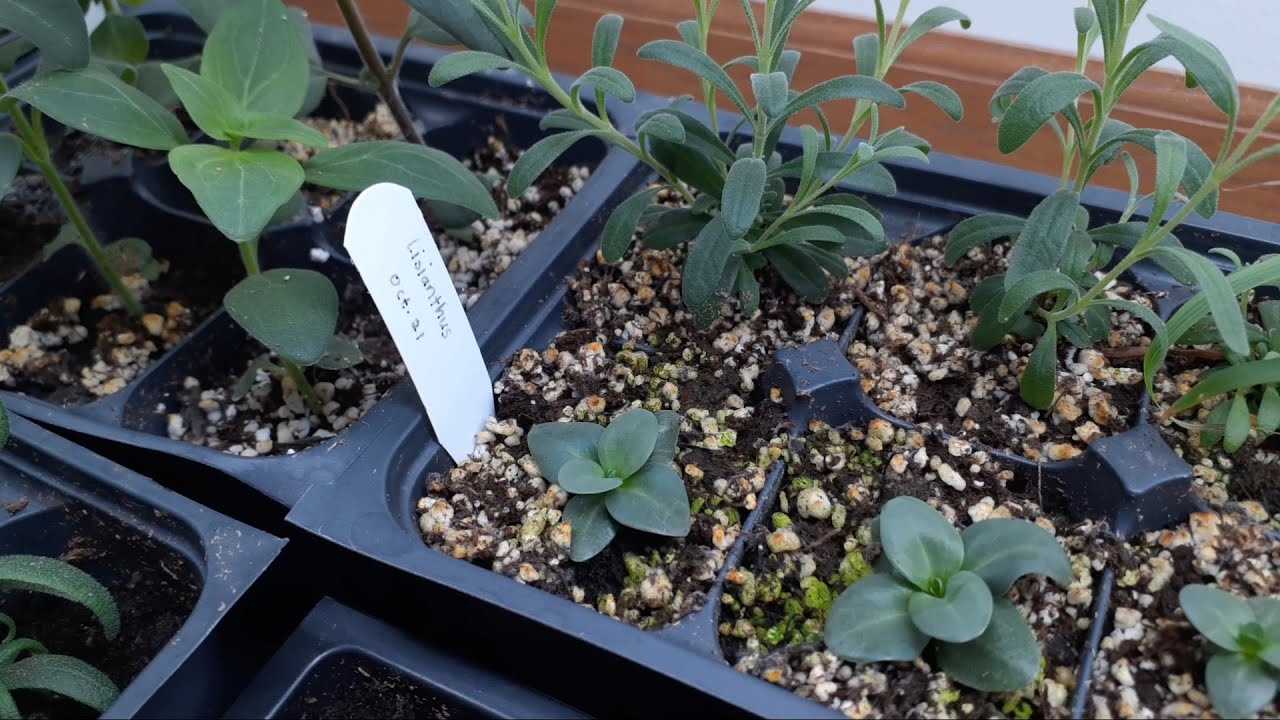
Before winter sets in, cut back the eustoma plant to about 4 to 6 inches from the ground. This helps protect the plant and encourages better regrowth in the following spring. Remove any dead or diseased foliage to prevent the spread of pests or diseases.
By employing these pruning and training techniques, you can ensure that your eustoma plants thrive and produce an abundance of beautiful flowers.
Harvesting and Maintenance
Once your eustoma plants have reached maturity, you can begin harvesting the flowers. It’s important to harvest them at the right time to ensure a longer vase life.
Harvesting:
1. Look for flowers that have fully opened and have a vibrant color. These are the ones that are ready to be harvested.
2. Use clean and sharp scissors or pruners to cut the stems just above a set of leaves.
3. Avoid harvesting flowers that are still in bud or haven’t fully opened yet, as they will not last as long in a vase.
4. Harvest in the morning or late afternoon when the temperature is cooler to help the blooms last longer.
Maintenance:
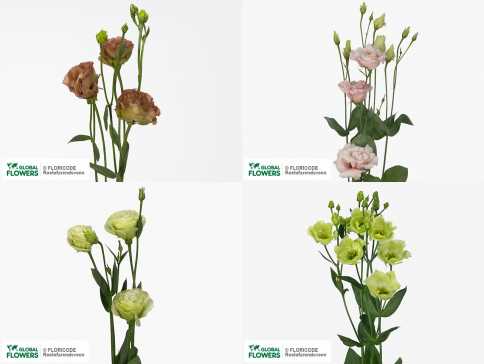
1. After harvesting the flowers, immediately place them in a bucket of clean and cool water. This will help keep them hydrated.
2. Remove any foliage that will be submerged in water to prevent bacterial growth.
3. Change the water in the vase every two days, and trim the stem ends by about an inch to ensure better water uptake.
4. Display the eustoma flowers in a cool and well-ventilated area away from direct sunlight and heat sources.
5. Remove any wilted or damaged flowers to prevent the spread of diseases.
Additional Tips:
1. Deadheading: Regularly deadhead the spent blooms to encourage more flower production.
2. Support: If the eustoma plants become top-heavy, provide support in the form of stakes or cages to prevent them from falling over.
3. Pest and Disease Control: Keep an eye out for common pests like aphids and spider mites, and treat them as soon as you notice any signs of infestation. Also, ensure proper air circulation and avoid overwatering to prevent fungal diseases.
4. Fertilizer: Apply a balanced fertilizer every two to three weeks during the growing season to promote healthy growth and abundant blooms.
By following these harvesting and maintenance practices, you can enjoy a bountiful and long-lasting display of eustoma flowers.
Questions and Answers:
What is Eustoma?
Eustoma, also known as lisianthus, is a flowering plant with beautiful and delicate flowers. It comes in a variety of colors, including white, pink, purple, and blue.
Where can I buy Eustoma seedlings?
Eustoma seedlings can be purchased at nurseries, garden centers, or online gardening stores. Make sure to choose healthy seedlings and buy from a reputable source.
When should I plant Eustoma seedlings?
Eustoma seedlings should be planted in the spring, after the last frost has passed. This will give them enough time to establish before the heat of summer arrives.
How do I care for Eustoma seedlings?
Eustoma seedlings require well-drained soil, plenty of sunlight, and regular watering. It’s important to keep the soil moist but not soggy, and to fertilize the plants every few weeks with a balanced fertilizer.
Can I grow Eustoma in pots?
Yes, Eustoma can be grown in pots. Choose a large enough pot with drainage holes and fill it with well-draining potting soil. Place the pot in a sunny location and water the plant regularly.
How long does it take for Eustoma seedlings to bloom?
Eustoma seedlings usually take about 10-12 weeks to bloom from the time they are planted. However, this can vary depending on the growing conditions and the specific variety of Eustoma.
Can I save the seeds from my Eustoma plants?
Yes, you can save the seeds from your Eustoma plants. Allow the flowers to fully mature and dry on the plant, then collect the seeds and store them in a cool, dry place until you are ready to plant them.







